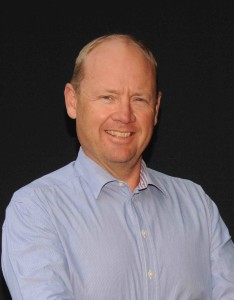What should my food GP% really be?
All too often operators think that a 65% food Gross Profit percentage is acceptable when in reality far better is achievable whilst still maintaining quality and integrity.
The key to achieving and maintaining a sustainable GP %age lies in developing accurately-costed standardised recipes. It lies in ensuring that portion control of all food items is being monitored and that the establishment is aware of just how much everything costs.
A car manufacturer would never pull a figure out of the sky when selling a car, so why do kitchens? Chefs tend to forget that all food costs should be based on net revenues not gross revenues, on allowing for wastage at production and for tax. If these aren’t taken into consideration margins can easily blow out to unacceptable levels. Setting chefs a maximum spend budget based on a net revenue projection is one way to maintain a good margin.
| Based on a net revenue projection/week a maximum budgeted spend to achieve a set margin | |||||
| Net Revenue/week | 28% Food Cost/72% Margin | 30% Food Cost/70% Margin | 32% Food Cost/68% Margin | 34% Food Cost/66% Margin | |
| €20,000 net/week | €5,600 | €6,000 | €6,400 | €6,800 | |
| €25,000 net/week | €7,000 | €7,500 | €8,000 | €8,500 | |
| €30, 000 net /week | €8,400 | €9,000 | €9,600 | €10,200 | |
What are surround costs?
Surround costs consist of every food-related cost associated with getting the plate of food to the customer not normally added by the chef. Every item that costs the business money must be added into production costs to enable the business to achieve its margins. Surround costs like sugar and sauce sachets, bread rolls and butter, biscuits with the tea and coffee, the generic cream, coulis and mint dessert garnish and even seasoning add to the cost-base of a dish, so if the customer isn’t paying for them then who is? When calculating a dish the cost/price of all food-related items must be taken into consideration; this includes garnish, seasoning and all other surround costs.
| Surround Cost Items | Average prices |
| Bread roll | € 0.09-0.24c |
| Butter portion | € 0.06-0.13c |
| Sauce sachet | € 0.04-0.07c |
| Sugar sachet | € 0.01-0.03c |
| Milk portion 50 mls | € 0.04c |
| Biscuit | € 0.16-0.33c |
| Jam portion | € 0.09-0.45c |
Surround costs of a bowl of soup
2 bread rolls and 2 butter: 2 x 0.15 = (30) + 2 x 0.10= (20) = €0.50
30 bowls of soup a day: 30 x 0.50 x 7 days x 52 weeks = €5,460.00
Surround costs of a cup of coffee
Packet of biscuits, sugar and milk: 1 x 0.22 + 2 x 0.01 + 1 x 0.04 = €0.28
50 cups of tea/coffee a day: 50 x 0.28 x 7 days x 52 weeks = €5,096.00
So based on 50 cups of tea or coffee a day and only 30 bowls of soup you’re adding €10,556 to your cost base if you aren’t adding it into the gross selling price.
What items do chefs forget when costing a dish?
Tax and waste are the two main details that get forgotten when accurately calculating selling prices on menus. Between 4% and 7% must be added at production to allow for associated trim and wastage. If a carrot costs 50 Cent before it is top-tailed and peeled, it still costs you 50 Cent afterwards; you just have less of it so allowing for this in your cost base will help you to calculate a true cost.
VAT is another important aspect that must be added into your calculations to achieve an acceptable margin. After calculating your net selling price add the 9% to ensure that the customer is the one who pays the VAT and not the business. The old method of tripling the cost simply does not cut the mustard (pardon the pun) and is a dangerous way to run any business.
Food Costing Formula –
In this case we are targeting a 70% margin (30% food cost) and the cost of the dish including waste equated to €2.00.
Dish cost (including 5% waste)/Target Food Cost % x 100 = Selling Price (plus VAT)
€2.00/30 x 100 = €6.67
Net Selling price of dish = €6.67 (plus VAT) €6.67 x 1.09= €7.27
(Suggested selling price €7.50 or €7.95)
VAT in Ireland is set at 9%
What is a product sales mix and how do I use it?
A product sales mix is one of the most important tools that a chef can use to see exactly what is and what isn’t selling. Downloaded from your Point Of Sale your product sales mix will show you just how many of each dish were sold during the set period of time. This information coupled with an accurate dish cost will show you exactly what dishes you should be promoting to the customer base. A dish that sells well and returns a good cash margin is one that should be on a special on a busy night so that the business makes the most of the opportunity to generate better revenues.
Top 10 tips to attain better GP%age on food
1/ Develop accurately-costed menus
2/ Introduce measures to control portion size
3/ Be aware of all surround costs
4/ Ensure waste and tax are incorporated into selling price
5/ Introduce standardised recipes
6/ Evaluate your product sales mix when writing new menu
7/ Negotiate purchasing prices with sales reps regularly
8/ Minimise waste; use a waste-tracking sheet to see what you’re throwing in the bin
9/ Make sure that floor staff are aware of dishes that have a good cash margin and promote them
10/ Do not over-prepare food too far in advance.









